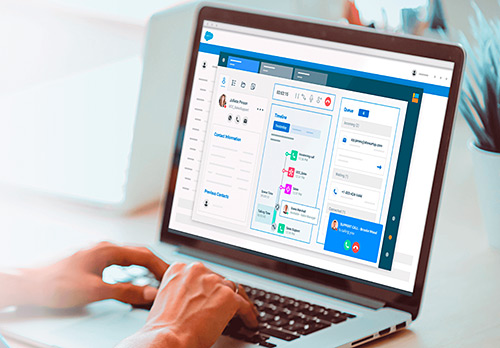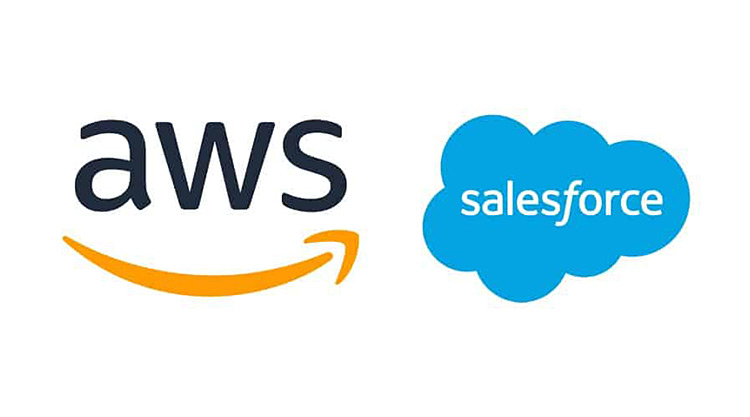Est-ce qu’une solution CRM peut être bénéfique à votre entreprise? Quand il est utilisé à 100% de ses capacités, un CRM peut vous faire gagner du temps, des ressources et améliorer significativement votre service client. Cependant, si vous ne savez pas exactement ce dont votre entreprise a besoin ou si vos salariés vont s’en servir, il peut être un désavantage. UpCRM vous livre aujourd’hui les 12 points clés à prendre en compte avant d’implémenter une solution CRM.
1. Faire de l’intégration une priorité
La plupart des CRM ne fonctionnent pas car ils sont mal intégrés. Le choix de l’intégrateur est aussi important que le choix du CRM lui-même. Si vous faites le mauvais choix, vous ne serez réellement en mesure d’utiliser les caractéristiques et les avantages que vous aviez pensé avoir.
2. Se concentrer sur le “R” de CRM
Aujourd’hui , la plupart des gens utilisent le CRM en tant que base de données transactionnelle pour leur parler de l’état d’un client : prospect ou opportunité . Au lieu de cela , envisager de se concentrer sur le «R» dans CRM : relations . La clé est de conduire le comportement en interne par l’enseignement de votre équipe la différence entre les entrées de la base de données et ce qui compte vraiment : de vraies relations avec vos clients .
Today, most people use CRM as a transactional database to tell them about the status of a customer, prospect, or opportunity. Instead, consider focusing on the “R” in CRM: relationships. The key is to drive behavior internally by teaching your team the difference between database entries and what really matters: real relationships with your customers.
3. Understand the Feature Trade-Offs
Most people will tell you integrations, feature sets, and user experience are key. That’s true. But the real test is understanding what is important to you and how you prioritize. Having a framework of what things need to get transferred over, what features are most important, and what the home screen will look like will help you choose the right solution. –Fan Bi, Blank Label
4. List Your Requirements
With Zoho, Salesforce, and numerous other providers out there, it’s easy to get lost in a set of advertised features that may or may not cater to your business. Instead, stop looking at your potential CRM for their marketing departments’ list of features, and create your own list of actual requirements to ensure a system meets your needs. –Nathan Hale, First American Merchant
5. Determine How It Makes a Difference
In order for a solution to work, you need to identify where the problem lies and the impact it’s having on the company. Determine where the CRM solution can solve existing problems and offer the answers you need to achieve your strategic objectives. Make sure it helps in as many areas as possible prior to implementing. –Cynthia Johnson, American Addiction Centers
6. Look for a Potential Return on Investment
Before you implement a system that requires an upfront cost or a recurring cost to maintain, you need to run the numbers to gauge the potential return. How soon and to what degree will this system positively impact acquisition and retention rates? How will it provide further revenue to achieve the return you want to achieve? –Peter Daisyme, Due.com
7. Understand That It Takes Time
Rolling out a new CRM is not easy. First, you should have your processes clearly laid out to roll into the CRM. After programming it to do what you want, the hard part begins. User adoption to a new CRM is by far the hardest part. Release features over time, helping your team build good habits before inundating them with an entirely new system that seems overbearing. It will evolve. –Aviva Leebow Wolmer, Pacesetter
8. Find Out Whether It Serves the Customer
A CRM can make things a lot easier on the inside, but be wary of turning your relationships with your customers into a robotic process. Personal relationships between your people and your clients are very important, and sometimes an attempt to be more efficient can actually alienate the people who already liked the way you did business. –Matt Doyle, Excel Builders
9. Think About Long-Term Costs
The first thing to consider when implementing a CRM is long-term costs. These systems are expensive, so you need to make sure they have the key capabilities you need before investing. The best way to do this is by asking each potential system for demos, and from there, ask for a trial. I have used Salesforce for years. It works well for us, but it might not be the best fit for everyone. –Jayna Cooke, EVENTup
10. Develop a Short and Long-Term Strategy
Before making the financial investment and the time investment into a CRM system, it’s important to consider how it will align with your short and long-term strategy in terms of how you plan to scale the business. You don’t want to put all your customer relationship management efforts into a system that will not grow with you or offers too many features that you will never use. –Angela Ruth, eCash
11. Ask Yourself If You Can Commit
CRMs are not all made the same; some are a real pain in the neck. If you find a good one, you have to really commit to it. It’s so easy to fall back into old habits and manage your leads from your inbox. But having half of them in the inbox and the other half in your CRM is not going to fly. Automate as much of the insertion process as possible, and it will help you tremendously. –Adam Steele, The Magistrate
12. Be Where Your Customers Are
Mobile is more pervasive than ever before, and as a result, customer behaviors and actions have followed suit. You need a powerful and easy-to-use solution that unifies your first-party data and enables your marketing and product teams to automate highly targeted and personalized marketing and transactional campaigns across all relevant channels. –Mark Ghermezian, Appboy






